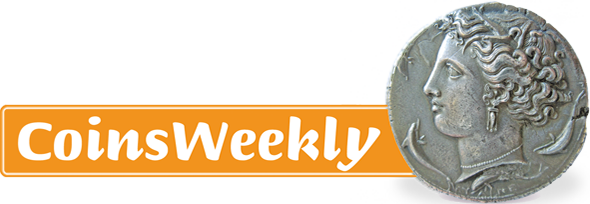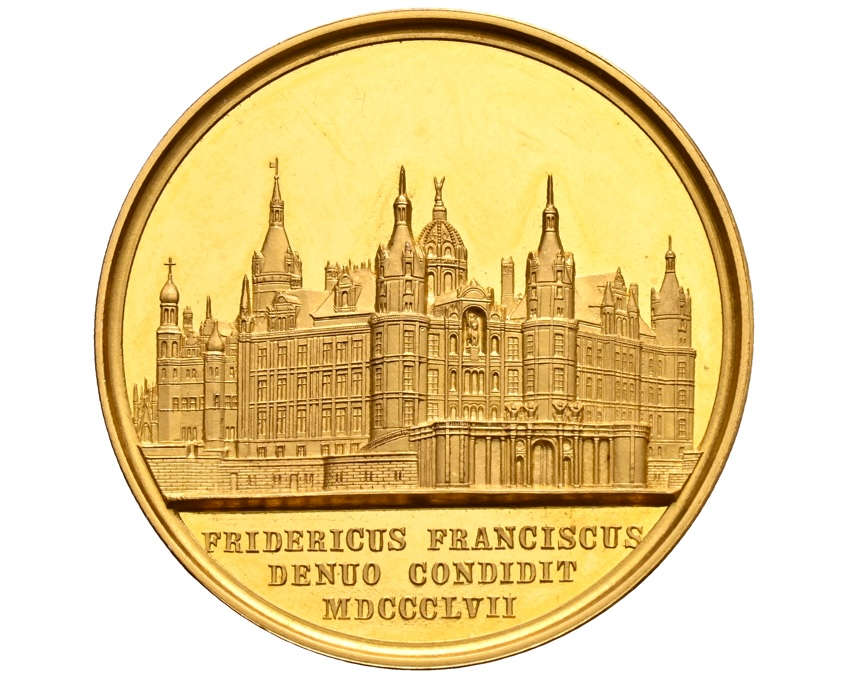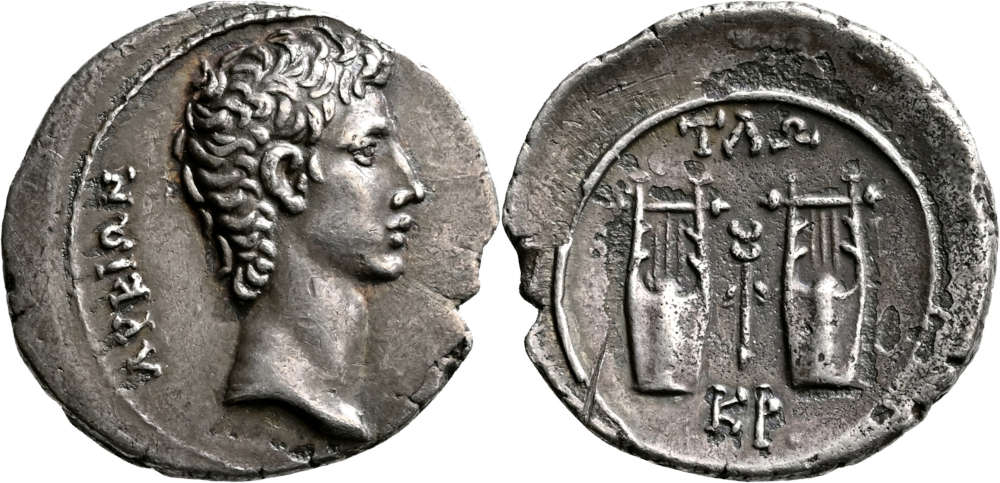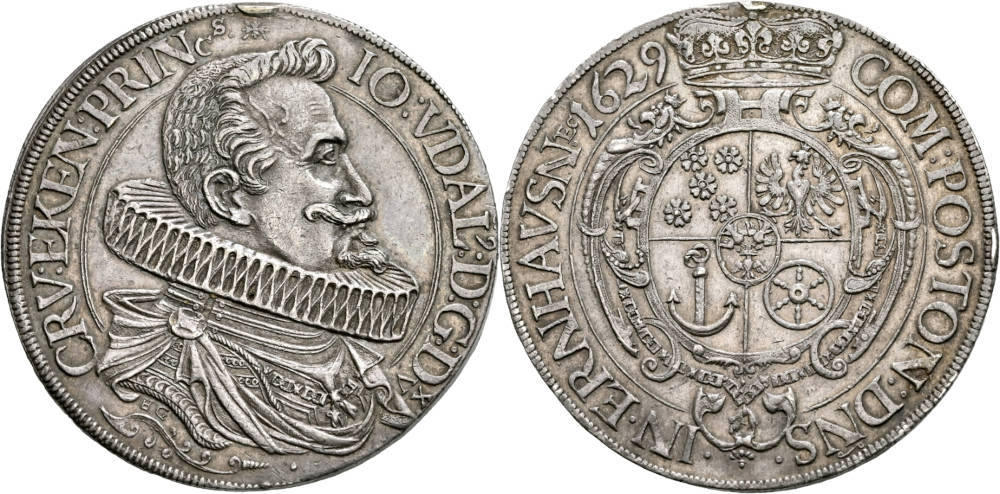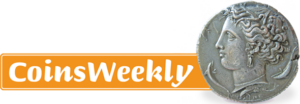Lückger Collection II at the Peus Spring Auction
Dr. Busso Peus Nachf.
Auction 442
Coins
28-30 April 2025
D-Frankfurt a. M.
Dr Busso Peus Nachf. presents its 442nd auction. It will take place from 28 to 30 April 2025 in Frankfurt. Among the items on offer will be the Lückger II Collection.
The spring auction starts with a particularly balanced selection of ancient coins. Balanced not only in terms of the ratio of Greek to Roman coins, but also within these two categories. All classical regions and periods are well represented in the ‘Greek’ category, as the auction house has received two small overview collections of Greek coins.
The Roman section of auction 442 is under the same auspices, with a small collection of fine republican denarii being joined by some sought-after rarities such as the denarius of M. Calpurnius Piso Frugi (Cr. 418/2a) and C. Antonius (Cr. 484/1). Among the imperial coins, the collection of Dr Gey with its focus on the emperor Augustus is worth mentioning, which is complemented by a large number of mostly excellent denarii from the first to the third century AD. Roman gold is also well represented with 20 aurei and a splendid group of solidi.
The more than 60 group lots in collector-friendly packaging promise a heated conclusion to this first part of the spring auction.
The world coins on offer will once again be dominated by the Lückger Collection II – Rhineland, Westphalia and selected individual pieces. The collection will again be offered at the end of the auction. However, the auction will begin as usual with coins from the non-German countries. The first item worth mentioning here is a gold 32-franc coin 1800 B, Bern with a moderate estimate of €5,000.
After the coins and medals of the Habsburg hereditary lands, among them a broad-oval silver medal of the early 18th century on the pilgrimage church in Maribor (Slovenia), which to knowledge of the auction house has not yet been offered, follow the feudal German coins.
The outstanding top piece is a thick double thaler from the county of Moers from 1567, which is probably unique.
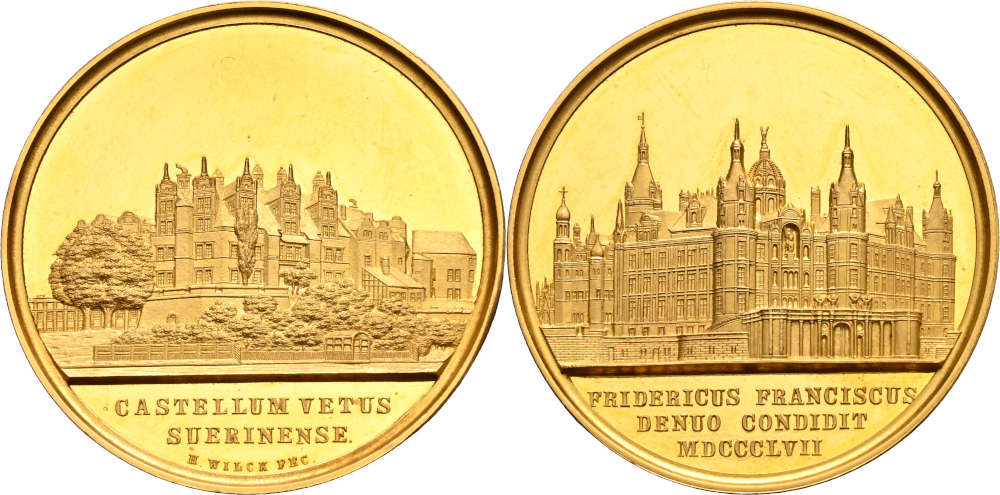
Lot 1877: Mecklenburg-Schwerin. Gold medal 1857 for the new construction of Schwerin Castle. Estimate: 10,000 EUR.
In addition, 2 gold medals from Mecklenburg-Schwerin also deserve special mention. On the construction of the new Schwerin palace and an unusually heavy medal of merit. There are also thalers, their partitions and small denominations for every purse. The German coins after 1871 shine with some rare years.
As announced, the highlight of the auction will follow immediately afterwards. The second part of the Lücker Collection contains over 380 lots. Among them are rarities and tastefully selected individual pieces from all over the world. We will start again with coins from abroad. The coins from the Carolingian period from France and Italy are spectacular. The conjointly struck coins of the popes with the Carolingian rulers are among the oldest ones of the Papal State. As with the entire Lückger collection, the estimates are kept low and are likely to contain surprises.
Among Lückger’s coins of the Habsburg hereditary lands, there is a feudal thaler of the County of Dietrichstein from 1695, which will start at an estimate of 2,000 euros in near mint condition. Among his feudal German coins, the more than 20 bracteates from central Germany and Hesse must be mentioned first. Furthermore, there are also thalers, medals and gold coins from across all Germany. Novelties and duplicates from the core collection of Rhineland and Westphalia among them. On the one hand, this gives unsuccessful underbidders in auction 441 a second chance, and on the other hand, there are also additions that contribute to the quotability and elucidation of the Rhenish-Westphalian currency area in the Middle Ages.
The Lückger collection ends with a large number of homogeneously held combined lots, which should definitely be viewed by both dealers and collectors who want to quickly build up a basic stock for further collecting. The vast majority of these combined lots are shown in the Internet catalogue. Conveniently, this is followed by the combined lots from other collections. Here, as always at the end of every Peus auction, you will find varied and favourably priced convolutes.



